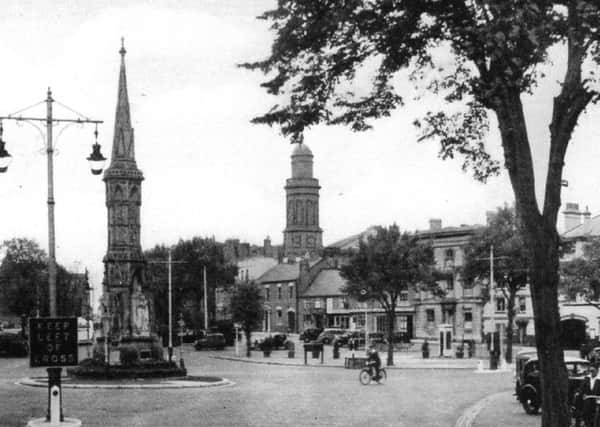Look Back with Little: Cautionary tale from an expert visit of 1909


A report then appeared in their transactions. It had been compiled by a Major Frear and subsequently read to members at a society meeting before being sent to the printers who then lost the report. Another member, Dr Day, wrote an alternative account. The reader is left to wonder whether it differed significantly from the original version.
The comments about Banbury make especially interesting reading. Their initial observation was ‘Such a town as Banbury is a grief and despair to the antiquary’. This was a reaction to what had happened to the earlier St Mary’s Church. Furthermore it was their belief that ‘towns without any archaeological value do not long retain the passing stranger within their gates’.
Advertisement
Hide AdAdvertisement
Hide AdTheir concluding analysis was that ‘Banbury is now rather a good centre for excursions than a place of interest in itself’.
During the visit the party from Leicester viewed the Cross and suffered their second disappointment namely that it was erected later than the one identified in the nursery rhyme. Like so many people after them they assumed that what they saw was on the same site. This can be excused as even William Potts the Banbury Guardian editor and author of a number of histories of the town reached the same conclusion.
Their spirits must have lifted considerably by what they saw in Parsons Street and the Market Place. They may well have been amongst the last visitors to be impressed by the Globe Room at the Reindeer Inn before its supposed disappearance to America. In the Market Place bow windows and gables pleased their architecturally attuned eyes.
The final part of the account of their town visit makes interesting reading. A reference to Banbury Castle suggests that in the early 20th century there was still something to be seen above ground.
Advertisement
Hide AdAdvertisement
Hide AdConcerns about an area relatively near the Cross were expressed by Banbury photographer Martin Blinkhorn in the Banbury Guardian’s ‘Down Memory Lane‘ (February 25, 1988). Back in 1949 he took an aerial picture of the area between Calthorpe Street and what today is the line of Boxhedge Road. Central to this was the Green with its largely Georgian houses with gardens behind. His planning related concerns focussed on replacement of the gardens by commercial not domestic buildings and the demolition of a large part of Calthorpe Street property to make way for Sainsbury’s, office blocks, and car parks.
The only original building on the East side of Calthorpe Street was Rosemarie Higham’s ‘By the Fire’ which Martin described as ‘a thoughtful and clever development incorporating shop and coal store/sales’. The two buildings were originally the Gate Houses to Calthorpe Manor and were only saved by Rosemarie after a long struggle with the local council.
Turning to the line of properties on the Green, Martin regretted the demolition of No47 that had been home to Hilton Shingler a vet. He could not understand how the DHSS had persuaded Cherwell District Council to give permission for its replacement by their unexciting building when other houses on the Green (42 and 51) were painstakingly restored.
In conclusion Martin stated ‘it is a pity that not more is made of the town’s historical back ground to attract and interest the tourist; if, in the future someone sees fit to develop this aspect then it is to be hoped that it will be appreciated where the centre of interest truly lies’. To have done so would have added a valuable dimension to the nearby Cross and, since 2005, the Fine Lady Statue.
Although the Leicester group visit was a long time ago it should cause us to ponder the wisdom of retaining the town’s architectural heritage at the same time as we focus on regeneration.